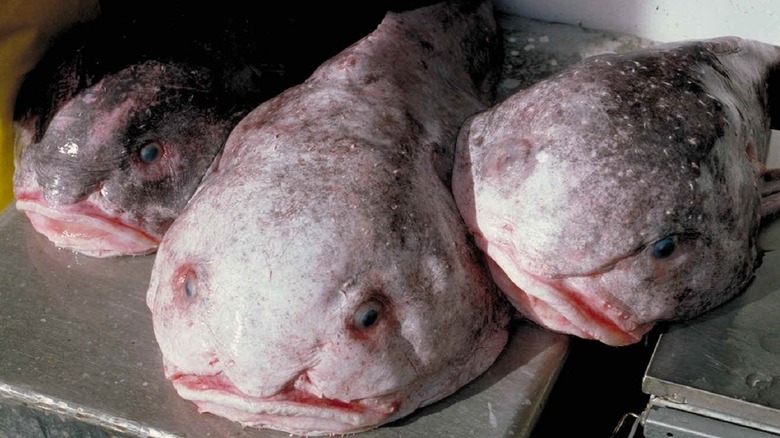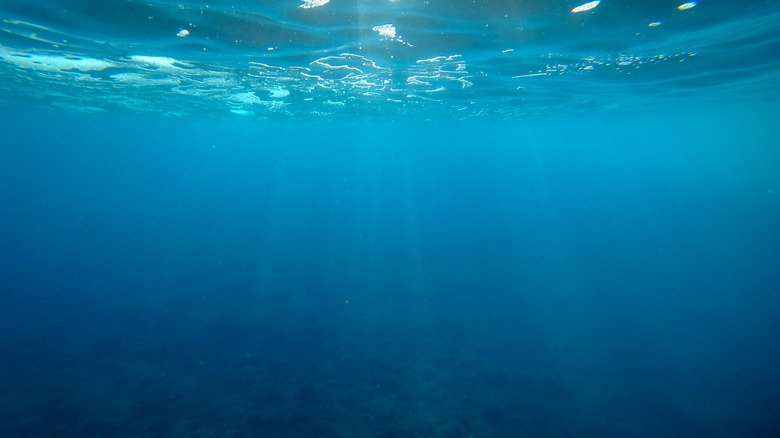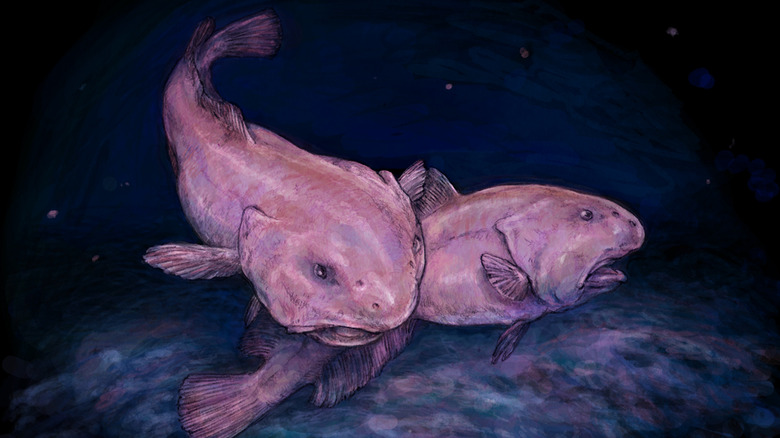Why The Blobfish Isn't Really As Ugly As You Always Thought
It's one of those grotesque marvels of nature that you can't seem to pull your eyes away from no matter how hard you try. The famously repulsive blobfish has been voted the ugliest animal on the planet by the Ugly Animal Preservation Society. It's no surprise, really. The deep sea-dwelling creature looks like something straight out of a Roald Dahl book. Its massive nose that is almost bigger than the rest of its body hangs down its face like a grimy wrecking ball, and its beady little black eyes rob it of any sentience. It seems to be in a perpetual frown, indicating sorrow and self-deprecation with its thin mouth that runs the course of its entire body. It really just looks like one big, ugly tumor slathered in mucus.
All that being said, there are certain factors at play within the blobfish's organic pedigree that should be pointed out in conjunction with its blatantly unappealing countenance. Just because it's ugly doesn't mean it doesn't deserve love, right? The blobfish — or Psychrolutes microporos – was first discovered by marine biologists off the coast of New Zealand in 1983. For ages, it remained overlooked by the public eye (which probably saved it from a lot of ridicule) until images of its comically revolting face started proliferating across the internet in the early 2000s. After years of research, we have some answers as to why it looks the way it looks (via Science Focus).
Why is the blobfish so ugly?
The blobfish resides at an oceanic depth of between 2,000 and 4,000 feet. In order to avoid being crushed to death by the staggering deep-sea pressure, it had to adapt accordingly. Ergo, its bones are softer than a normal fish's and its muscles are astonishingly malleable. The pictures you're most familiar with were taken after the blobfish had been caught and summoned to the surface of the water where its squishy body is entirely exposed to the elements beyond its normal dwelling location. In response to the drastic changes in pressure, its body virtually melts and turns to jelly, as Science Focus explains.
Swim bladders are little pockets of air located in a fish's body that help it to maintain buoyancy in the heart of the sea. In place of a swim bladder, blobfish sport a bone/muscle structure that is significantly softer than usual. When a fish with a swim bladder is pulled from the water, the drastic pressure change can cause its organs to explode out of its body (gross, right?). When the same is done to a blobfish, its insides don't burst, but it does die and deflate like a sad balloon. The truth is that it looks entirely different in its natural habitat thousands of feet below the surface (via Smithsonian Magazine).
The blobfish looks normal in its natural habitat
All that considered, you might be asking yourself what the blobfish looks like before it's been barbarically yanked from the depths of Davy Jones' locker so humans can gawk and cringe at it. As you might expect, its features don't droop or sag when it's down below, so it really just looks like a normal fish. Its head is still quite large and its eyes are a deep black, but it otherwise exhibits a complete form (similar to a tadpole) that allows it to swim, eat, and exist without looking like a self-loathing slug (per Science Focus).
So basically, the blobfish has gotten a bad rap all these years because we are literally judging it at surface level. If there's a moral to this story, it's not to judge a book by its cover — or rather, not to judge a fish by its deflated corpse in a totally foreign environment and atmospheric pressure.


